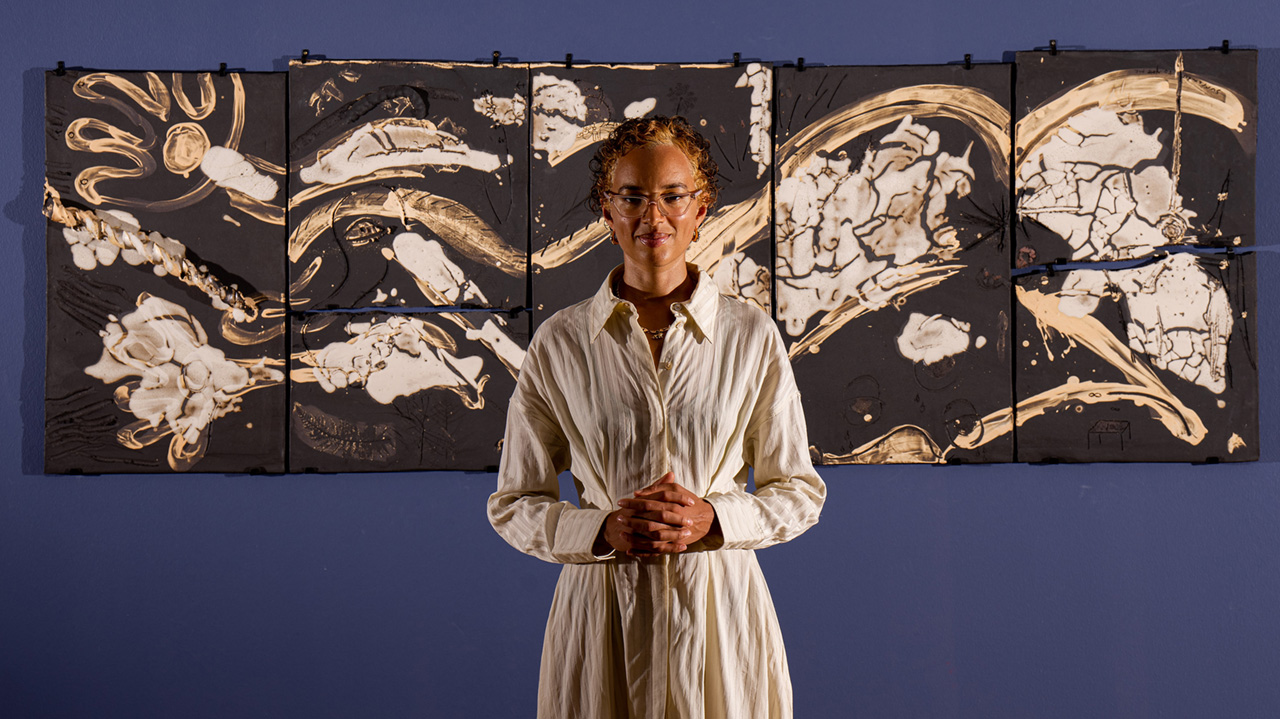Tribute to kith and kiln
When colonialists brought new pottery techniques to Nigeria they transformed a traditional, practical practice into fine art for middle-class collectors
Body Vessel Clay is an exhibition that examines seven decades of Nigerian-influenced women’s pottery, tracing an era beginning with the opening of the country’s Pottery Training Centre in Abuja in 1952.
Subtitled Black Women, Ceramics and Contemporary Art and showing at York Art Gallery until next month, the collection of physical works, designs and film focuses on the influence the centre – founded by English potter Michael Cardew under the supervision of the colonial government – had on the centuries-old crafting traditions of the West African country.
“I have dual heritage – I was born in this country but grew up in Nigeria – so from a personal and political point of view I’ve become interested in the exchanges that exist between the countries,” says curator Jareh Das, explaining the genesis of the exhibition, which was previously shown at London’s Two Temple Place.
“Cardew was really famous during the 1950s and was brought to Nigeria by the colonial rulers to train local potters,” says Das. “The story goes, this local potter who was already also famous, Ladi Kwali, was influenced by his intervention and colonial techniques, which led to her using glazes and these kind of things. Many of the objects in the exhibition have gone through the two cultures, have taken in Nigerian indigenous tradition and modern technique, and are real ceramic hybrids.”
The transition from functional pottery pieces to fine art – again instigated by the influence of colonialism, primarily to cater for a newly emerging, middle-class collectors’ market – is another trope examined by Body Vessel Clay.
“Practical things, such as water vessels, became fine art through the intervention,” Das says.
“One of the key objects in the exhibition is a water jug which has been glazed and kiln fired. Traditionally that object would be fired over an open fire and left slightly porous to keep the transported water cool. These new methods transformed it into a heavy, dense and decorative object.
“It’s all part of unlocking an aspect of the effect colonialism and empire had on modernism in ceramics. We can’t deny the changes they brought but we also really want to honour the ancient traditions – which do still continue today – of Nigerian women potters.”
Alongside pieces by Ladi Kwali, the exhibition will show work by Bisila Noha, Dame Magdalene Odundo, Shawanda Corbett, Julia Phillips, Phoebe Collings-James and Yorkshire-based Jade Montserrat, who, along with artist-filmmakers Webb-Ellis, present Clay, a performance for camera.
“As someone who works through modernism into the present, I wanted to pay attention to a generation of artists who provide new voices in ceramics,” says Das.
The curator struggles to choose a favourite exhibit.
“There’s so much to highlight and talk about,” she says, but admits to being fascinated by a small, screw-topped bottle by Halima Audu and pieces made specifically for the exhibition – Womb Vessel and Water Vessel, by Bisila Noha, which bring together hand building and throwing techniques while blending different clays and textures.
“The exhibition really makes you think about the expansive possibility of clay and the generations of women who have used this material which is found in nature. It really is an ever-evolving medium.”
Body Vessel Clay: Black Women, Ceramics and Contemporary Art, until 18 Sept, York Art Gallery

Leave a reply
Your email address will not be published.